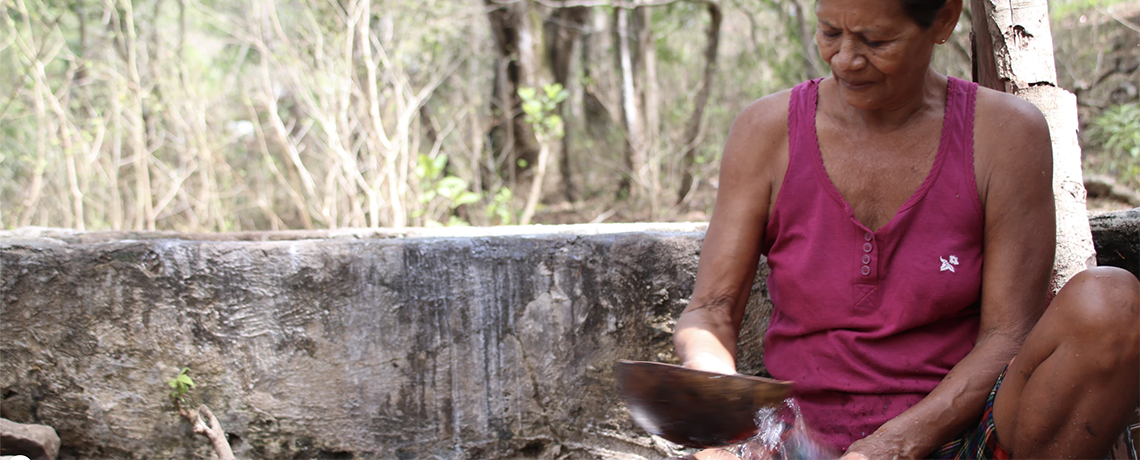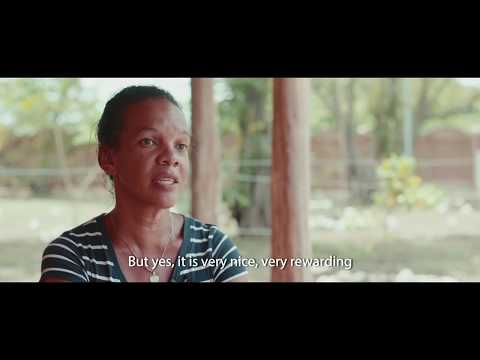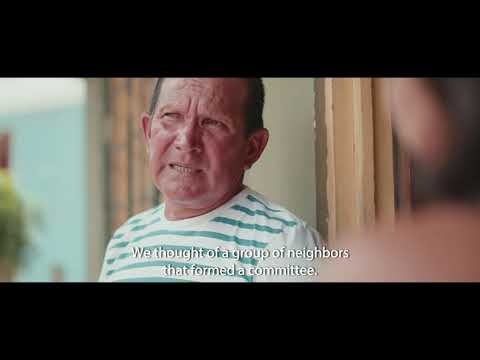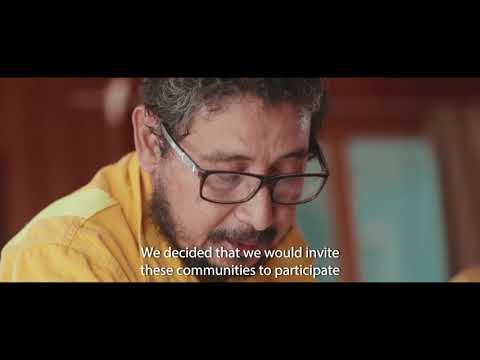
Based on the climate change scenarios there is an expectation that by 2080, annual rainfall is forecasted to reduce up to 65% in the Northern Pacific Region. These extreme conditions will exacerbate climate and water stress in some areas.
The “Strengthening Capacities of Rural Aqueduct Associations' (ASADAS) to Address Climate Change Risks in Water Stressed Communities of Northern Costa Rica” project aims to improve water supply and promote sustainable water practices of end users and productive sectors by advancing community- and ecosystem-based measures in rural aqueduct associations (ASADAS) to address projected climate-related hydrological vulnerability in northern Costa Rica. On the demand side, the project will mainstream climate change knowledge and strategies into public and private sector policy and planning in order to promote adaptation of productive practice to maintain ecosystem resilience to climate change.
- District
- National Governments
- United Nations Development Programme (UNDP)
- Global Environment Facility (GEF)
Expected outcomes
Component 1 - Building community-based infrastructure and technical capacities to address projected changes in water availability
Component 2 - Mainstreaming of ecosystem-based adaptation into public and private sector policy and investments in the targeted area.
The initial plan will be executed by the UNDP Costa Rica Country Office in close cooperation with Rural Aqueduct Association (ASADAS) and the Institute of Aqueduct and Sewers (AyA) and other relevant stakeholders. The Country Office will recruit a team of national and international consultants to undertake the activities. In the course of implementation UNDP Panama Regional Centre will be consulted for advice and guidance as requested.
This project targets three Socio-Ecological Management Units (SEMU) of Northern Costa Rica. The SEMUs 1, 2 and 3, as they are referred to, comprise the cantons (municipal territories) of Guatuso, Upala, Los Chiles, and La Cruz (SEMU 1), Liberia and Canas (SEMU 2), and Santa Cruz, Nicoya, Hojancha and Carrillo (SEMU 3). It has a total territorial extension of 10,608.9 sq-km and a population of 354,132 inhabitants. This region is targeted for SCCF financing as the supply of water resources is threatened by shortages as a result of climate change impacts.
Based on climate change scenarios there is an expectation that by 2080, annual area rainfall is forecasted to reduce up to 65% in the Northern Pacific Region. In the shorter term, rainfall decreases of 15% (2030) in 2020 and 35% in 2050. These extreme conditions will exacerbate climate and water stress in some areas, s
Currently the National Emergency Comission has declared a yellow alert due to a drought affecting the countys comprising SEMU 3. This will compound pressures as water consumption in the target area and is also expected to increase by at least 20% over the coming decades driven by an expected increase of exports of agro-industry products, while investments in water infrastructure, mainly by AyA (Institute of Aqueducts and Sewers), will be reduced due to fiscal and legislative constraints.
Sustained increased demand of water resources by the agriculture sector and lack of finance investment towards water infrastructure is beginning to create stress on water availability in the area. Actual productive practices, mainly pineapple, livestock and citric crops with a high water footprint index are increasing pressure on irrigation, which according to available data, most are rainfed (83% of the total) while irrigation accounts for 17%.
If climate change driven pressures are not addressed, Costa Rica´s SEMUs of the North region will inevitably experience significant water shortages that will have a severe economic impact on livelihoods and productive sectors. As a result of increased frequency of extreme weather events (particularly drought) local communities and farmers in Northern Costa Rica are currently facing reduction on their means of productions, as access to water and water infrastructure and facilities are critical to their livelihoods. Consequently the communities from the target area (SEMUs 1,2,3) are becoming increasingly vulnerable to climate variability.
Approximately 1,900 ASADAS exist as locally organized groups of men and women from the user communities who are interested in the non-for-profit management of the local aqueduct and sanitation system. In a decentralized manner, municipalities and ASADAS provide services to about 46% of the total Costa Rican population. ASADAS alone administer and operation water systems for over 30% of the population, primarily for those in rural areas and border regions. Existing aqueduct infrastructure is often outdated and overloaded causing inefficient water service delivery, which in turn complicates the collection of fees from end users. Instability in fee-collection leads to financial uncertainty, which impedes the AyA’s ability to plan for and implement targeted improvements and new investments.
Most ASADAS and the local governments of the target area need to develop the necessary skills and have access to knowledge tools and adequate investment, in order to address the scarcity of water supply. AyA’s current investment plan, including capacity development activities directed mainly to ASADAS, rarely incorporate community-based or ecosystem-based measures. In addition, financial institutions lack proven tools capable of providing correct incentives for private sector enterprises to integrate community and water-related adaptation measures. If these entities do not strengthen their capacities to cope with climate change, the vulnerability of rural populations of the Northern region of Costa Rica will increase.
COMBATING CLIMATE CHANGE AND COVID-19 by UNDP Climate on Exposure
Preparar el acueducto para enfrentar la crisis climática by PNUD Costa Rica on Exposure
Life lessons by PNUD Costa Rica on Exposure
Las jóvenes que enfrentan la crisis climática con innovación by PNUD Costa Rica on Exposure
WATER THAT GIVES LIFE TO EQUALITY by PNUD Costa Rica on Exposure
FORTALECIMIENTO DE LAS ASADAS EN LA ZONA NORTE DEL PAÍS from PNUD Costa Rica on Vimeo.
Component 1. Building community-based infrastructure and technical capacities to address projected changes in water availability
Outcome 1.1: Infrastructure and technical capacity of ASADAs strengthened to cope with climate change impacts to aquifers in the target area.
Output 1.1.1.: Strengthened metering systems to track water supply to end-users (micro- and macrometers) in the ASADAS network provide updated information on climate-related risks and vulnerability of project area water resources.
Output 1.1.2.: Water catchment (well, spring, and/or rain), storage, and distribution systems in rural areas improved and resilient to climate change.
Output 1.1.3.: Water-saving devices installed in homes.
Output 1.1.4.: Pilot sanitation and purification measures (e.g., sludge management and dry composting toilets) and other adaptive technologies for wastewater management to improve water quality.
Output 1.1.5.: Water sources and associated aquifer recharge areas protected and/or rehabilitated through reforestation, natural regeneration, and other protection and conservation measures.
Outcome 1.2: The capacity of ASADA end-users in particular that of women, Maleku indigenous communities and Nicaraguan migrant workers to mainstream climate change adaptation into their livelihoods systems is built.
Output 1.2.1.: Community-based climate change training program with a gender focus and includes minority groups, such as indigenous communities. - Training Toolkit on good practices for water-conscious consumer behavior and biodiversity monitoring in place. - At least 1,500 household members and producers, including women (35%) trained to maintain and improve the use of water and sanitation in a context of increased climate impacts - Extension services (i.e., community outreach) for land use and production practices include course and support material
Outcome 1.3: Meteorological information integrated to sub-regional development plans and strategies to increase resilience of rural communities to address water variability.
Output 1.3.1.: Fifteen (15) new Automated Weather Stations (AWS) and/or Automated Flow Stations (AFS) installed to provide consistent and reliable environmental data in real time in the selected SEMUs.
Output 1.3.2.: Vulnerability Index, Adaptive Capacity Index developed and supporting the climate early warning and information system, and the Risk Management Plan for Potable Water and Sanitation (RMPPS).
Output 1.3.3.: Information monitoring system for the AyA and the ASADAS’ Management System (SAGA) to track the impact of adaptation measures with the aim to reduce the vulnerability of rural communities to address water variability due to climate change, and articulated to national-level information systems (National System of Water Resources and Hydrometeorological National System).
Output 1.3.4.: Climate early warning and information system on climate-related risks and vulnerability of project area water resources generated and disseminated to ASADAS, end users, and partners.
Component 2: Mainstreaming of ecosystem-based adaptation into public and private sector policy and investments in the targeted area.
Outcome 2.1: Ecosystem-based climate change adaptation measures are integrated into public and private sector policy, strategies and investments related to rural community water-sourcing infrastructure and services, i.e a national model of EcosystemBased Water Security Plans is developed by the project and formally endorsed by national institutions.
Output 2.1.1.: Four (4) participatory RMPPS implemented within each target canton (SEMU 1: Guatuso, Upala, Los Chiles, and La Cruz; SEMU 2: Liberia and Cañas; SEMU 3: Santa Cruz, Nicoya, Hojancha, and Carrillo).
Output 2.1.2.: The AyA and the CNE investments for the prioritized project area integrate climate change risks.
Output 2.1.3.: Ten (10) livestock and agricultural producing companies adopt a voluntary fee system (Certified Agricultural Products and Voluntary Watershed Payments) to pay for the protection of water resources.
Output 2.1.4.: Valuation modeling of ecosystem-based adaptation measures (UNEP methodology) and economic valuation of ecosystem services (UNDP methodology) support the integration of water-related risks and new ecosystems management practices within productive sectors (agriculture and livestock industry).
Outcome 2.2: The purchasing and credit policies of at least 20 agricultural and livestock trading companies and 5 financial institutions operating in the target region promote adoption of productive practices that help maintain ecosystem resilience to climate change.
Output 2.2.1.: Farmers incorporate ecosystem-based climate change adaptation measures into their production processes, making use of revised purchasing and credit policies of agricultural and livestock trading companies and financial institutions.
Output 2.2.2.: Knowledge management system allows disseminating data, information, and toolkits to foster and mainstream ecosystem-based adaptation practices in other water-intensive productive sectors across the country.




